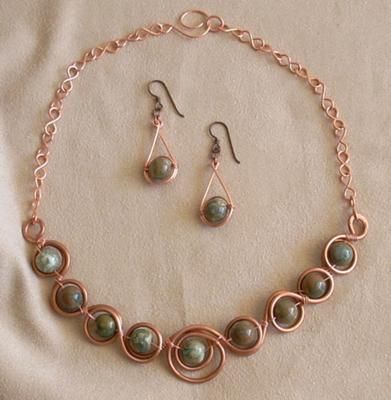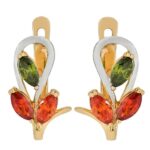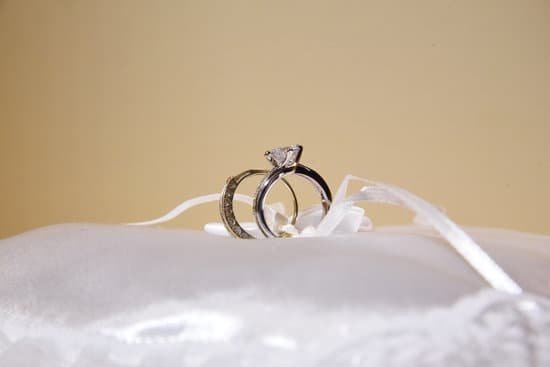Are you wondering how to price handmade jewelry to sell? Pricing your handmade jewelry can be a challenging task, as you want to ensure that your items are priced competitively while also covering your costs and making a profit.
In this article, we will explore the key factors to consider when pricing handmade jewelry, from understanding the value of your creations to researching the market and calculating costs. We will also delve into setting a profit margin, pricing strategies, adjusting prices according to market demands, and communicating the value of your handmade jewelry.
When it comes to selling handmade jewelry, understanding the value of your creations is essential. Handmade jewelry holds intrinsic value due to the time, skill, and creativity that goes into crafting each piece. It’s important to consider the uniqueness and quality of your designs when determining their worth in the marketplace. Factors such as craftsmanship, design complexity, materials used, and brand reputation can all contribute to the perceived value of your jewelry.
In addition to understanding the value of handmade jewelry, there are various other critical factors that come into play when pricing your pieces for sale. From researching the market and identifying competitors and target audience to calculating costs for materials, labor, and overhead expenses – these are all essential components in setting a competitive yet profitable price for your handmade jewelry. Let’s explore each of these factors in detail in the sections that follow.
Factors to Consider When Pricing Handmade Jewelry
Pricing handmade jewelry can be a daunting task for many artisans. However, by considering several key factors, you can set the right price for your unique creations. Here are some important considerations when pricing your handmade jewelry:
- Materials: List out all the materials used in creating your jewelry pieces and their costs. This includes gemstones, precious metals, beads, clasps, chains, and any other components.
- Labor: Calculate the amount of time it takes to create each piece of jewelry. Consider the level of skill and expertise required to make each item as well as the cost of your time.
- Overhead expenses: Factor in the costs associated with running your jewelry business such as rent for workspace, utilities, packaging supplies, marketing materials, and tools.
Once you have established these costs, you can move on to determining the desired profit margin. This involves setting a markup percentage that will allow you to cover all expenses and generate a profit from each sale. With this information in hand, you can then explore different pricing strategies to find the sweet spot that balances affordability for customers with profitability for your business.
Researching the Market
When it comes to pricing handmade jewelry to sell, understanding the market is crucial. Identifying your competitors and target audience will help you set realistic and competitive prices for your products. This section will discuss the importance of market research and provide tips on how to effectively identify your competition and target audience.
Competitor Analysis
Conducting a thorough competitor analysis is essential for pricing handmade jewelry. Look for other artisans or businesses that offer similar products to yours. Take note of their pricing strategies, materials used, design styles, and unique selling points. This information will give you a better understanding of where your products fit in the market and how you can differentiate yourself.
Target Audience Identification
Understanding your target audience is just as important as knowing your competitors. Consider who would be interested in buying your handmade jewelry – are they young trendsetters looking for unique statement pieces, or sophisticated professionals seeking timeless accessories? Research their demographics, preferences, purchasing behavior, and buying power. This will help you tailor your products and prices to meet their needs and expectations.
Market Trends and Demands
In addition to identifying competitors and target audience, stay updated with current market trends and demands. Pay attention to popular styles, materials, colors, and motifs in the jewelry industry. Are there any emerging trends that could influence customer preferences? Understanding these shifts in the market will help you make informed decisions when setting prices for your handmade jewelry.
By researching the market thoroughly, you can gain valuable insights that will guide you in effectively pricing your handmade jewelry to attract customers while ensuring profitability.
Calculating Costs
When it comes to pricing handmade jewelry to sell, one of the most crucial factors to consider is the cost of materials, labor, and overhead expenses. The following steps can guide you on how to effectively calculate these costs:
- Materials: Make a list of all the materials used in creating each piece of jewelry. This includes gemstones, metals, beads, wires, clasps, and any other components. Keep detailed records of the cost of each item.
- Labor: Estimate the amount of time it takes to create each piece and determine your hourly wage or rate. Calculate the labor cost for each piece by multiplying the hours spent on making it with your hourly rate.
- Overhead Expenses: Consider any other costs associated with running your jewelry-making business, such as rent for your workspace, utilities, equipment maintenance, packaging supplies, and marketing expenses. Divide these costs by the number of pieces created to allocate a portion of overhead expenses to each piece.
By carefully calculating these costs for each handmade jewelry piece, you can determine a baseline price that covers your expenses and ensures that you are not selling at a loss.
It’s important to regularly review and update your cost calculations as prices for materials and overhead expenses may change over time. By staying informed about current market rates and trends in the jewelry industry, you can make informed decisions about adjusting your pricing strategy to remain competitive while still maintaining profitability.
Setting a Profit Margin
Determining the right profit margin is crucial when it comes to pricing handmade jewelry to sell. It’s essential to strike a balance between making a profit and ensuring that your prices are competitive in the market. The profit margin is the percentage of the selling price that is profit. Therefore, it’s important to carefully consider this aspect when setting prices for your handmade jewelry.
When determining the desired markup for your handmade jewelry, it’s important to take into account factors such as the cost of materials, labor, and overhead expenses. Calculate the total expenses incurred in creating each piece of jewelry, including the cost of materials such as gemstones, metals, and other components, as well as the time spent on crafting each piece. Additionally, factor in any overhead expenses such as tools, equipment, packaging, and marketing.
Another important aspect to consider when setting a profit margin is researching the market and analyzing competitors’ pricing strategies. Understanding what similar handmade jewelry pieces are selling for can help you determine a competitive yet profitable markup for your own products. It’s also crucial to consider your target audience and their willingness to pay for handcrafted items.
In addition to considering costs and market research, it’s also valuable to reflect on your own business objectives and goals when determining the desired markup for your handmade jewelry. Consider what level of profit you aim to achieve per sale and how this aligns with your overall business strategy. Ultimately, establishing a realistic and profitable profit margin will enable you to price your handmade jewelry competitively while ensuring that your business remains sustainable in the long run.
Pricing Strategies
Pricing handmade jewelry is a delicate balance between covering costs and making a profit while still appealing to potential customers. Understanding the psychology of pricing and perceived value is crucial in this process. It’s not just about the materials and labor that go into creating the jewelry, but also how the price will be perceived by your target audience.
When determining how to price handmade jewelry to sell, it’s important to consider the psychological factors that come into play. For example, pricing items just below whole numbers ($29.99 instead of $30) can make them seem more affordable and create the impression of getting a good deal.
Additionally, offering a variety of price points can attract different types of customers – some may be drawn to higher-priced items because they perceive them as more valuable, while others may prefer lower-priced items for their affordability.
Another aspect of pricing strategy is creating a sense of exclusivity or scarcity. Limited edition pieces or one-of-a-kind designs can be priced higher due to their uniqueness, creating a sense of urgency for potential buyers who don’t want to miss out on something special.
In addition, it’s essential to communicate the value behind your handmade jewelry. This can include sharing your story as an artisan, highlighting the quality and uniqueness of your materials, and emphasizing the craftsmanship that goes into each piece. By effectively communicating these points, you can justify your pricing and create a compelling reason for customers to invest in your jewelry.
| Psychological Factors | Pricing Strategies |
|---|---|
| Pricing just below whole numbers ($29.99 instead of $30) | Create a sense of exclusivity or scarcity |
| Variety of price points to attract different customers | Communicate the value behind your handmade jewelry |
Adjusting Prices
Understanding Market Fluctuations
One of the critical aspects of pricing handmade jewelry to sell is being aware of market demands and trends. As a jewelry maker, it’s essential to understand that the market for handmade jewelry is subject to fluctuations due to factors such as seasonality, fashion trends, and consumer preferences. By staying informed about these shifts, you can adjust your prices accordingly to remain competitive and attractive to potential customers.
Flexible Pricing Strategies
To effectively respond to market demands and trends, consider implementing flexible pricing strategies for your handmade jewelry. It may involve offering discounts during off-peak seasons or aligning your prices with popular fashion trends.
Additionally, keeping an eye on what competitors are doing can help you gauge how your prices stack up in the current market landscape. By being open to adjusting your prices based on these insights, you can better position your handmade jewelry to meet the evolving needs of consumers.
Embracing New Trends
Another way to adjust prices in response to market demands and trends is by embracing new design techniques or incorporating trending materials into your jewelry pieces. If a particular gemstone or metal becomes highly sought after, consider integrating it into a new collection and adjusting the prices accordingly.
This strategy not only allows you to capitalize on current trends but also presents an opportunity to elevate the perceived value of your handmade jewelry. By showcasing innovation and adaptability in your designs, you can justify adjusting prices based on evolving market demands while maintaining profitability.
By continuously assessing the market landscape and being responsive to changes in demand and trends, you can refine your pricing strategy for handmade jewelry to optimize sales opportunities without compromising the value of your craftsmanship.
Communicating Value
In the competitive world of handmade jewelry, it’s not only about creating beautiful pieces, but also about effectively communicating the value and uniqueness of your creations to potential customers. One way to do this is by creating a compelling story behind each piece and establishing a unique selling proposition that sets your jewelry apart from others in the market.
When determining how to price handmade jewelry to sell, it’s important to consider the story behind each piece. Whether it’s the inspiration behind the design, the materials used, or the process of creation, these stories can add depth and meaning to your jewelry, making it more valuable in the eyes of customers.
For example, if you source rare gemstones from specific regions or incorporate traditional crafting techniques into your designs, these are all compelling elements that can be woven into the narrative of your jewelry.
Another key aspect of communicating value is establishing a unique selling proposition (USP) for your handmade jewelry. This is what differentiates your brand from others and gives customers a reason to choose your products over competitors’. Whether it’s eco-friendly practices, personalized customization options, or a focus on ethical sourcing, identifying and highlighting your USP can greatly influence customers’ perception of value.
In addition to telling a compelling story and establishing a USP, effectively communicating value also involves having a strong brand identity and clear messaging across all marketing channels. From product descriptions to social media posts, consistency in conveying the value and uniqueness of your handmade jewelry will help build trust with potential customers and ultimately lead to successful sales.
| Key Aspects | Importance |
|---|---|
| Compelling story | Adds depth and meaning to jewelry |
| Unique Selling Proposition (USP) | Differentiates brand from competitors |
| Messaging consistency | Builds trust with potential customers |
Conclusion
In conclusion, pricing handmade jewelry requires a careful balance of understanding the value of your product, researching the market, calculating costs, setting a profit margin, implementing pricing strategies, adjusting prices as needed, and effectively communicating the value of your work. It’s important to take into consideration all the factors discussed in this article in order to confidently set the right price for your handmade jewelry to sell.
When determining how to price handmade jewelry to sell, it’s crucial to keep in mind that your target audience and competitors play a significant role in the pricing strategy. Understanding what similar products are priced at and what your potential customers are willing to pay will help you make informed decisions about the price points for your pieces.
Additionally, remember that setting a compelling story and unique selling proposition behind your handmade jewelry can add perceived value and justify higher prices. By understanding these various elements and taking them into account when pricing your jewelry, you can ensure that it sells well while also providing fair compensation for your time and skill.
Frequently Asked Questions
What DIY Jewelry Sells the Most?
DIY jewelry that sells the most typically includes items like dainty necklaces, personalized bracelets, and statement earrings. These pieces are popular because they can be easily customized to suit individual tastes and preferences.
How Do I Start Selling My Own Jewelry?
To start selling your own jewelry, you can begin by creating an online store on platforms like Etsy or Shopify. It’s important to have high-quality photos of your jewelry, write compelling product descriptions, and promote your products through social media and other marketing channels.
Why Is Handmade Jewelry So Expensive?
Handmade jewelry is often more expensive than mass-produced items due to several factors. Firstly, the materials used in handmade jewelry are typically higher quality. Additionally, handmade jewelry requires a significant amount of time and skill to create, contributing to its higher price point.

Welcome to my jewelry blog! My name is Sarah and I am the owner of this blog.
I love making jewelry and sharing my creations with others.
So whether you’re someone who loves wearing jewelry yourself or simply enjoys learning about it, be sure to check out my blog for insightful posts on everything related to this exciting topic!





